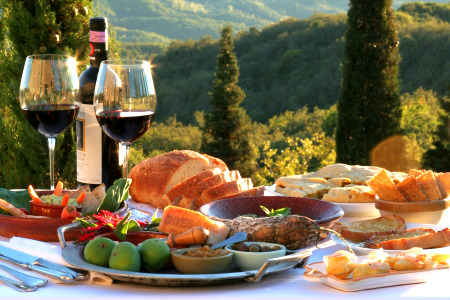Can you think of a better expression of culture than food? Yes, languages, music, dance and clothing often flash across your thoughts when you consider cultures, but the food from distant lands often draws us in to delve deeper. After all, we are what we eat, or as Jean Anthelme Brillat-Savarin states, “Tell me what you eat, and I’ll tell you who you are.” What we eat, the tastes and aromas of what we crave, are the culmination of years and often generations of experience. Those experiences may include a foundation in the land of our ancestral origins, the adaptations our ancestors made after migration, the cultural contexts of rustic versus cosmopolitan roots, generational poverty versus affluence, or a heritage of enslavement versus freedom. These parts of life impact what we eat, how we get our food, who cooks our food, who we share our food with and in what order.
Taking part in 25inchange.org has reminded me that most of our socialization and culture centers around food. So much so that food has become an obsession for Millennials and the Gen-Xers creating a ‘foodie’ culture. The pursuit of amazing food as exotic and authentic and organic as possible becomes a bloodlust for foodies. The true foodie has a list of new restaurants to try, photo-documents and actively share their opinions of dining experiences via social media and restaurant rating apps. My parents always asked a question rooted in the writings of Dick Gregory, “do you live to eat or eat to live?” I would often respond glibly, thinking how miserable life would be if you can not enjoy the food you eat. There are times we lust for food. We look forward to the seductive flavors satisfying a yearning. If cultures use food to express their emotions, then what are they expressing today? What emotions are we expressing when so many go hungry day after day, year after year?
We feel relief and satisfaction after savoring something tasty during memorable times. Whether first dates, birthdays, business promotions, the birth or adoption of a child, departures, retirements or deaths, cultures augment all of these events with food. The fragrant aromas and mouth-watering tastes leave an indelible imprint on our memory to connect the smells, tastes and emotions in those precious moments. That’s how the smell of your mom’s cookies, your husband’s Beef Wellington or wife’s Tikka Massala can have you floating in the clouds and take you back to some fond dining memories.
Dorthy Day, in her autobiography The Long Loneliness, felt that that in order to know some one, we must break bread with them. Our social experiment in 25 days of advocating for underfed school children brings our minds to the table to become familiarized with their struggle. When their cupboards are bare, and we are out scouting for the newest local grown, fusion cuisine restaurant, we shouldn’t forget those struggling to eat both near and far. Our culture has grown attuned to exclusive, sophisticated tastes and wanting the story behind the food’s journey to our plates, but we’ve forgotten and grown tone-deaf to the hunger pains of our malnourished neighbors. We are what we eat and who we eat with, so what does that say about our foodie culture? Let’s reform our food culture to include our plate settings for our neighbors at our tables and exude compassion for those facing food vulnerabilities. The struggle is real.

